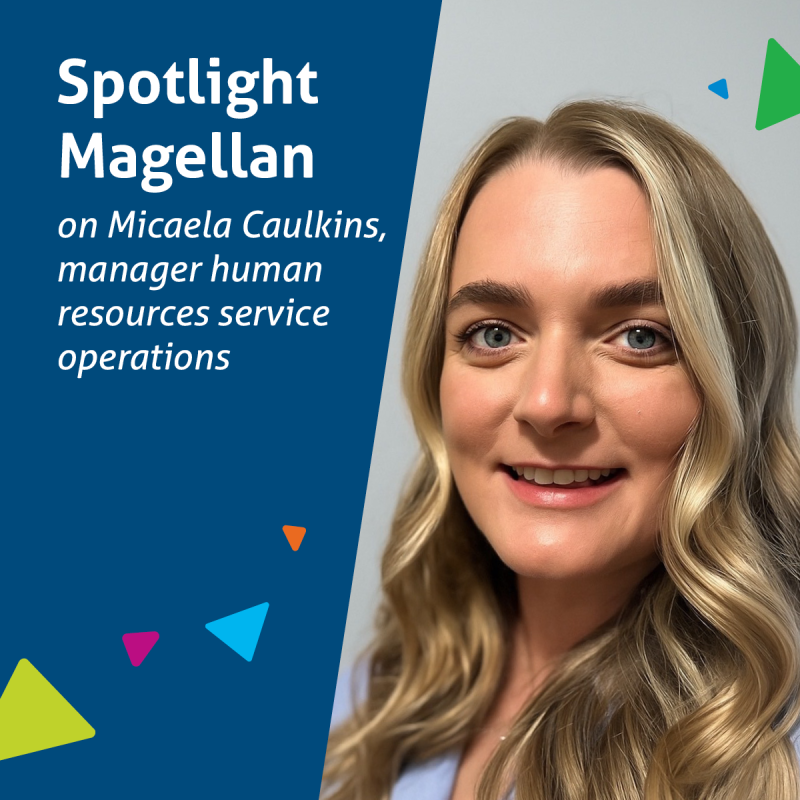Behavioral health crises are on the rise across the country. We sat down with Matt Hardin, crisis system director, Idaho, and Rebecca Mutchler, senior director business development, Magellan Healthcare, about how Magellan Crisis Connect 360 is closing gaps in crisis response and helping states build coordinated, community-based systems that improve access, strengthen accountability and support lasting recovery.
Why is an effective behavioral health crisis system so important right now?
Rebecca: Communities across the country are facing growing mental health and substance use challenges. Emergency departments and law enforcement are often the first to respond, even though they aren’t designed for behavioral health crises.
Matt: An effective system ensures:
- Timely access to care when it’s needed most
- Safe, community-based alternatives to hospitalization or incarceration
- Improved coordination between providers, payers and public agencies
Ultimately, it’s about saving lives and helping people recover in the least restrictive setting possible.
What is Magellan Crisis Connect 360?
Matt: Magellan Crisis Connect 360 is our coordinated approach to managing behavioral health crisis care for states and regions. It connects call centers, mobile response teams, and crisis stabilization facilities and units under a single accountable entity to deliver truly coordinated care.
Rebecca: The goal is simple—ensure people get the right care faster, reduce reliance on emergency rooms and law enforcement and improve outcomes for individuals, families and communities.
What shared challenges do states, communities and providers face in delivering crisis services?
Rebecca: Most crisis systems operate in silos with different agencies managing various parts of the response. This typically leads to:
- Confusion about who’s responsible for what
- Delays or gaps when people move between services
- Limited data sharing or outcome tracking
Addressing these challenges requires consistent standards, strong partnerships and clear accountability across all parts of the crisis system.
How does Magellan Crisis Connect 360 address these challenges?
Matt: We bring all parts of the crisis system together under one coordinated structure called a single accountable entity. That means one organization oversees the entire continuum of care, from the first call through post-crisis follow-up, so everyone knows who’s responsible for what.
Rebecca: Crisis Connect 360 also strengthens coordination between providers and agencies, ensuring individuals move seamlessly between services without gaps in care. Our shared data systems and public-facing dashboards promote transparency and collaboration, helping states track outcomes, identify trends and continuously improve performance.
How does the single accountable entity approach benefit communities and stakeholders?
Matt: By placing accountability and coordination under one umbrella, the single accountable entity approach ensures decisions are made with the entire system in mind. It streamlines communication, reduces administrative complexity and keeps partners aligned around shared goals.
Rebecca: For communities, that translates into:
- Expedited connections to crisis services
- Consistent quality and experience across providers
- Stronger collaboration between behavioral health, emergency and community-based services
What makes Magellan Crisis Connect 360 different from other crisis response models?
Rebecca: Many crisis models focus on individual components, like call centers or mobile response, without fully connecting the system. Magellan Crisis Connect 360 takes a more comprehensive approach, integrating people, processes and technology into a single accountable framework.
Matt: The model is clinically informed, guided by standardized assessments and evidence-based practices that ensure consistent, high-quality responses. Real-time coordination connects crisis lines, mobile teams and stabilization services, while public dashboards provide transparency and accountability.
Rebecca: As a leader in crisis care transformation, Magellan brings decades of experience building data-driven, community-based systems that strengthen system-level resilience and help reduce unnecessary emergency room use and justice system involvement. It’s more than a response model. It’s a connected, sustainable system designed to improve outcomes and long-term recovery.
What are the core components of the Magellan Crisis Connect 360 model?
Matt: At its core, Crisis connect 360 brings together the people, tools and technology needed to make crisis care seamless and effective. The model includes:
- Around-the-clock crisis response through a dedicated call center available to respond via call, text or chat, GPS-enabled mobile dispatch and follow-up to make sure people stay connected to the support they need.
- Consistent assessment tools that help determine a person’s level of risk and guide the right response at the right time.
- Personalized crisis plans and follow-up that are designed around each person’s needs and the resources available in their community.
- A compassionate workforce with lived experience that offers peer support, so individuals get help navigating services from someone who truly understands.
- Transparent public dashboards that share performance data and outcomes to help systems improve and stay accountable.
How does the model integrate with 988, behavioral health crisis lines and other community resources?
Matt: Crisis Connect 360 was built on SAMHSA’s best practices. Our crisis call center offers a place to call for individuals and families to outreach during a crisis. Calls to the 988 Suicide and Crisis Lifeline or behavioral health crisis lines are triaged and routed directly to local crisis teams.
Rebecca: Community partnerships ensure individuals receive the right care, in the right place, at the right time. This connected approach helps reduce unnecessary hospitalizations and keeps people supported within their own communities.
What role does technology play in ensuring timely, coordinated crisis response?
Matt: Technology really is the backbone of Crisis Connect 360. It’s what keeps every part of the system connected and responsive. Our platform supports real-time triage and routing, so people get help faster. It also gives providers shared access to the same information, which helps everyone stay on the same page.
Rebecca: Public dashboards promote data transparency and track outcomes so states and communities can see how their systems are performing and make informed decisions about where to focus resources.
What evidence or data shows that Magellan Crisis Connect 360 improves outcomes?
Matt: The model is grounded in evidence-based practices, and we’re already seeing measurable improvement in Idaho where Crisis Connect 360 has been in place for over a year. Current data shows:
- 83% of crises are resolved over the phone, meaning most callers receive the help they need without requiring in-person intervention.
- 86% of crises involving a mobile response team are resolved in the field. This avoids unnecessary hospitalization or law enforcement involvement.
- 92% of individuals served through stabilization programs are discharged back to the community after receiving short-term support.
Rebecca: These outcomes demonstrate the power of a coordinated system that connects people to timely community-based care and supports recovery beyond the initial crisis.
How does the model help improve efficiency and quality of care?
Rebecca: Crisis Connect 360 is designed to make the best use of every dollar invested in behavioral health crisis care. By coordinating services under a single accountable entity, the model reduces duplication, directs resources where they’re most effective and supports community-based care over higher-cost emergency settings.
Matt: Transparent performance dashboards give partners a clear view of outcomes and resource use, helping guide smarter reinvestment in programs that deliver results. This accountability and visibility make Crisis Connect 360 a financially sustainable approach to improving access, quality and long-term impact.
Can you share a real-world example of the program making a difference?
Matt: One story that really stayed with our team came from an elderly man in a small Idaho community. A friend called the crisis line out of concern for his safety and wellbeing. Our mobile response team arrived within 20 minutes and spent nearly three hours talking with him. He shared that he was experiencing emotional abuse and neglect in his home, with limited access to food and basic needs.
Although he declined additional services at that time, the team recognized the seriousness of the situation and contacted Adult Protective Services and Child Protective Services to ensure the safety of everyone in the home. Several months later, the team happened to run into him in the community. He told them, with support from APS, he had moved to a safe and stable home and said he “had not been this happy in years.”
It’s a reminder that even when outcomes aren’t immediate, coordinated crisis response can change the course of someone’s life.
Looking ahead: Sustainability, adaptability and what’s next
Rebecca: Crisis Connect 360 is designed not only to improve outcomes today but to stay sustainable and adaptable for the future. By coordinating every element of crisis response under a single accountable entity, states and communities can maximize impact and ensure resources are used where they matter most.
Matt: The model’s flexibility allows each state, region or community to tailor its approach, expanding mobile response in rural areas, deepening community partnerships in urban settings and customizing care for youth, older adults and individuals with complex needs.
Rebecca: Looking ahead, Magellan Healthcare is focused on scaling the model across more states, deepening data transparency and continuing to strengthen partnerships that drive faster, more coordinated care across the public sector.
To learn more about how Magellan Crisis Connect 360 is transforming crisis visit here.




